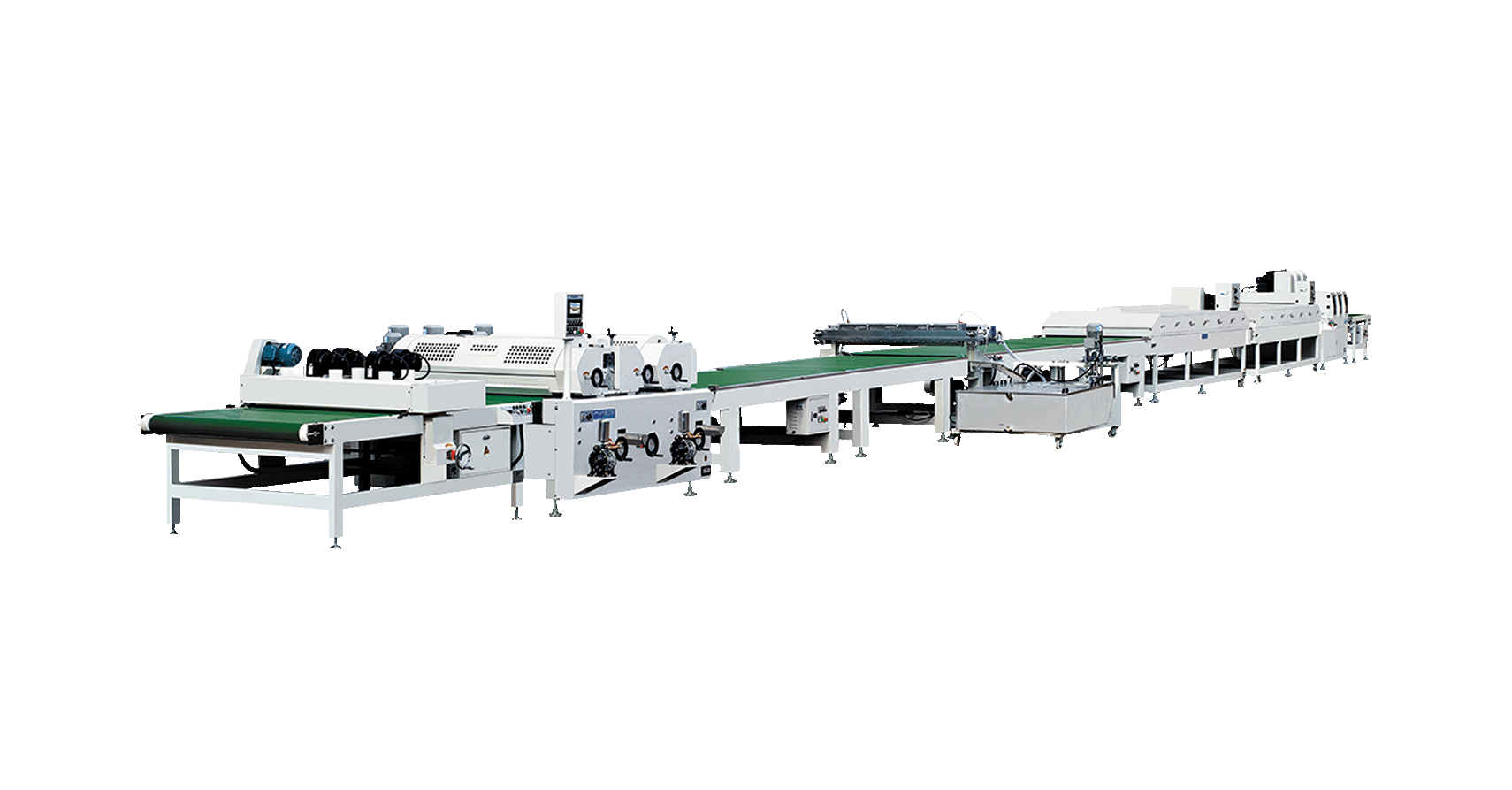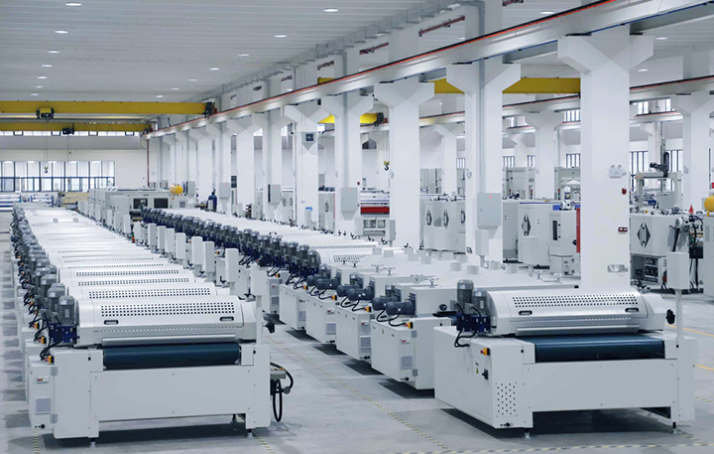How to Choose the Best Press Laminating Line: Key Criteria & Common Pitfalls
 October 29, 2025
October 29, 2025 Hits:190second
Hits:190secondSelecting a press laminating production line is one of the most critical investment decisions for any panel or furniture manufacturer. The equipment you choose will determine your output capacity, operational efficiency, product quality, and overall profitability for the next decade or more. A wrong decision can result in unstable lamination quality, low yield rates, high labor cost, and costly retrofit or replacement later.
At PURETE, we specialize in short-cycle press laminating production lines, and we have supported more than 20 large manufacturers with over 80 installations within a single year. Drawing from our deep engineering experience, this article provides an authoritative guide on how to properly evaluate a laminating line and avoid common mistakes. We also introduce how our new 4700T Vertical Short-Cycle Press Laminating Production Line sets a benchmark for large-panel high-efficiency lamination.
The Complexity of Press Line Selection
A laminating line is not a single machine but an integrated industrial system involving material handling, press control, heating, automation, digital inspection, and safety technologies. The investment is high and the expected lifecycle is long. Performance gaps will continuously affect cost and competitiveness.
Choosing a press line is therefore a balance of:
Present production needs
Future market trends and product upgrades
Automation and labor strategy
Space utilization and plant planning
Smart manufacturing capability
A wise selection protects return on investment and enhances competitive advantage.
Key Criteria to Consider
Evaluate Pressing Force with Future Market in Mind
Demand for textured, embossed, and deep-relief decorative panels continues to grow in high-end applications. If the press has insufficient tonnage, the manufacturer will lose access to high-margin market segments. A higher-tonnage press like PURETE's 4700-ton model ensures:
Stronger and more reliable adhesive bonding
Uniform pressure distribution on large surface areas
Greater design flexibility and surface-finish innovation
A high-tonnage solution expands business potential, not just solves current needs.
Ensure High-Precision Heating and Temperature Control
Heating technology affects laminate appearance more than any other factor. A production line must maintain stable temperature across the entire hot press plate. Look for:
Advanced oil circuits for balanced thermal distribution
Independent heating loops and heat-balancing layers
Precise temperature variation control, ideally within ±2°C
Efficient insulation to reduce energy consumption
Temperature uniformity is the core requirement for consistently high-grade laminated panels.
Prioritize Automation and Positioning Accuracy
Traditional laminating relies heavily on manpower, leading to inconsistency and waste. Modern upgrades focus on automated handling systems. Key features include:
Vertical feeding for accurate alignment and reduced footprint
Automatic double-sided paper laying with single-sheet separation
High-precision board positioning technology
Integrated edge trimming and surface inspection
Automation improves yield rates, reduces labor dependency, and stabilizes production efficiency.
Real Production Efficiency Beyond Cycle Time
Some suppliers only promote cycle time, but true output capacity must consider:
Changeover efficiency
Frequency and duration of inspections
Paper and steel-plate replacement time
Automation compatibility with panel formats
Production efficiency is determined by how smoothly all processes run together, not by one speed metric.
Intelligent Monitoring and Data Traceability
To remain competitive, factories must move toward digitization. A smart-enabled laminating line should support:
Remote troubleshooting and system monitoring
Full-line production data recording
Real-time fault diagnosis
Quality traceability based on batch and order tracking
This capability directly improves operational reliability and management efficiency.
Supplier Capability and Engineering Support
A reliable system requires mature technology and proven application results. When evaluating suppliers, consider:
Years of expertise in the laminating industry
Real performance demonstrated in customer factories
After-sales response speed and training capability
Engineering experience with large-panel production
Experienced suppliers help avoid long-term performance risk.
Common Pitfalls and Their Consequences
Many factories face major losses because they do not look beyond initial pricing. Common pitfalls include:
Choosing insufficient pressing force, restricting product development
Ignoring automation and relying heavily on manual labor
Selecting a model without considering future expansion
Buying equipment unseen or without site verification
Overlooking smart monitoring, resulting in operational blindness
When mistakes like these surface during operation, correction requires expensive upgrades or complete replacement. The right decision must be based on lifecycle value, not initial cost.
Latest Design: PURETE's Vertical Short-Cycle Press for Large-Panel Veneering
PURETE introduces a comprehensive solution specifically developed for today's market needs: 4700T Vertical Short-Cycle Press Laminating Production Line
It is designed to meet the widespread adoption of 7×9 ft large-format panel production and deeply embossed surface finishes.
Core strengths include:
4700-ton pressing force enabling premium surface bonding and deep textures
Vertical board feeding for compact layout and stable alignment
Automatic double-sided paper laying ensuring consistent sheet separation
Bosch Rexroth hydraulic system for precise motion control and low mechanical noise
Siemens and Schneider electrical components for global reliability
Integrated double-sided inspection guaranteeing defect elimination early in production
High-speed synchronized servo movement to boost throughput
Intelligent data traceability supporting digital factory transformation
This new solution has enabled multiple clients to rapidly scale their high-end capacity. For example, manufacturers who adopted PURETE's press lines experienced:
Up to 60 percent increase in premium production capability
Up to 40 percent reduction in labor cost due to automation
Improved yield through stable temperature and pressure performance
The line is engineered to eliminate capacity bottlenecks while ensuring consistent product aesthetics.
Conclusion
Selecting the best press laminating line requires careful engineering evaluation. The decision is not simply about specifications but about consistent real-world performance, automation level, and the ability to support future product upgrades.
PURETE's 4700T Vertical Short-Cycle Press Laminating Production Line represents the next stage of technological progress in large-panel and high-quality laminate production. It combines advanced pressing mechanics, intelligent automation, digital monitoring, and proven global case applications.
PURETE remains committed to delivering high-value laminating solutions that accelerate our clients' growth and strengthen their leadership position in the market.















